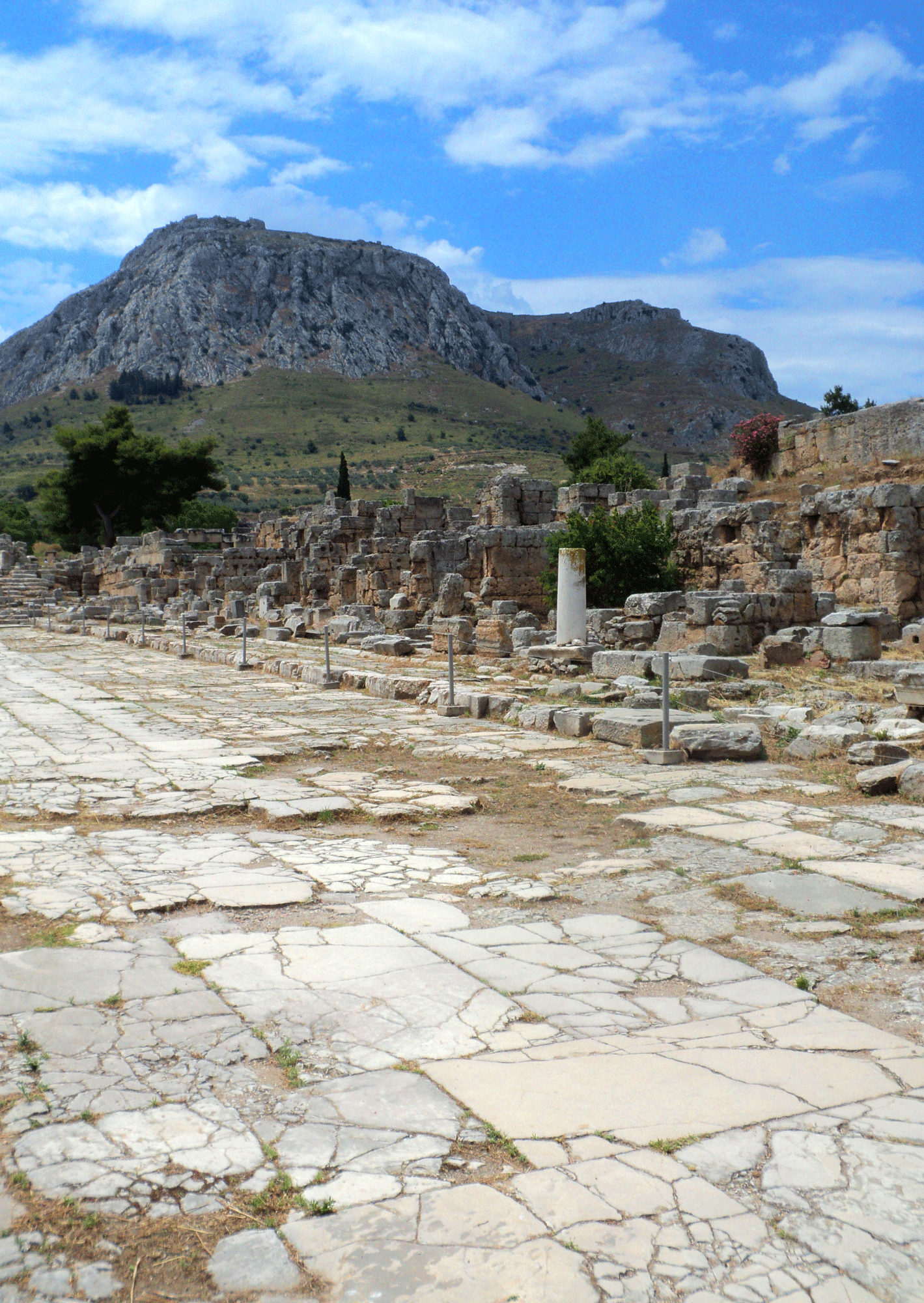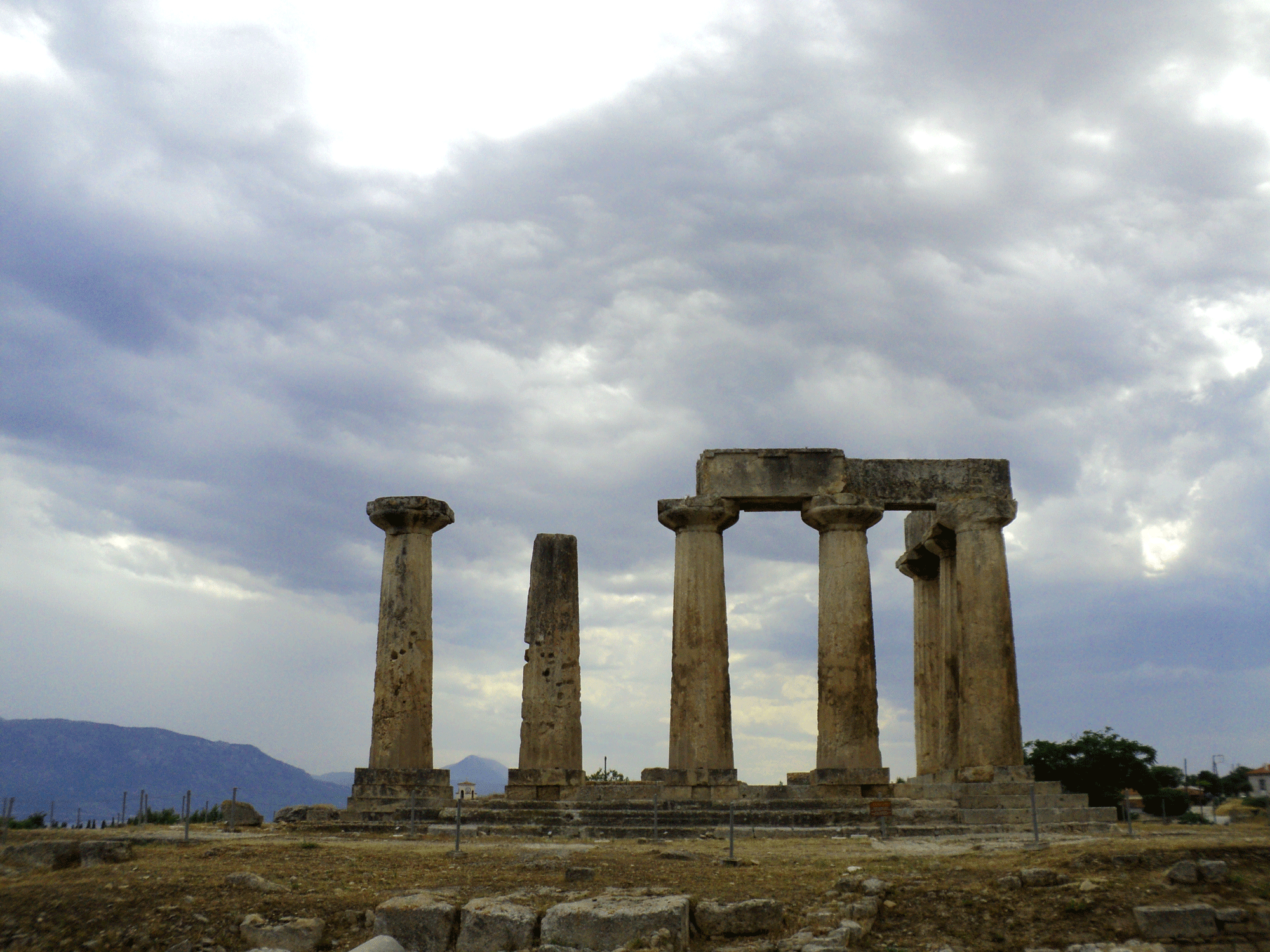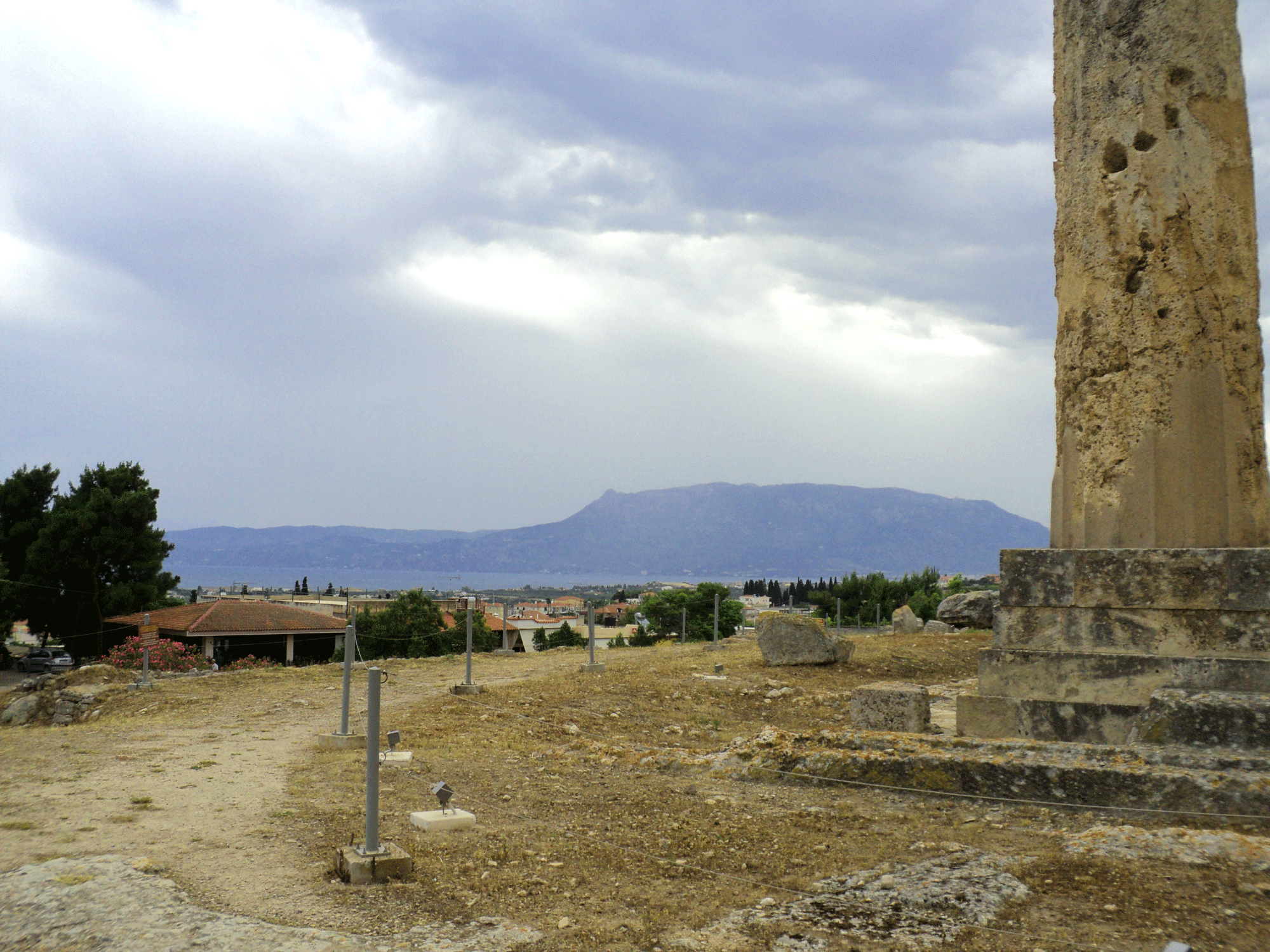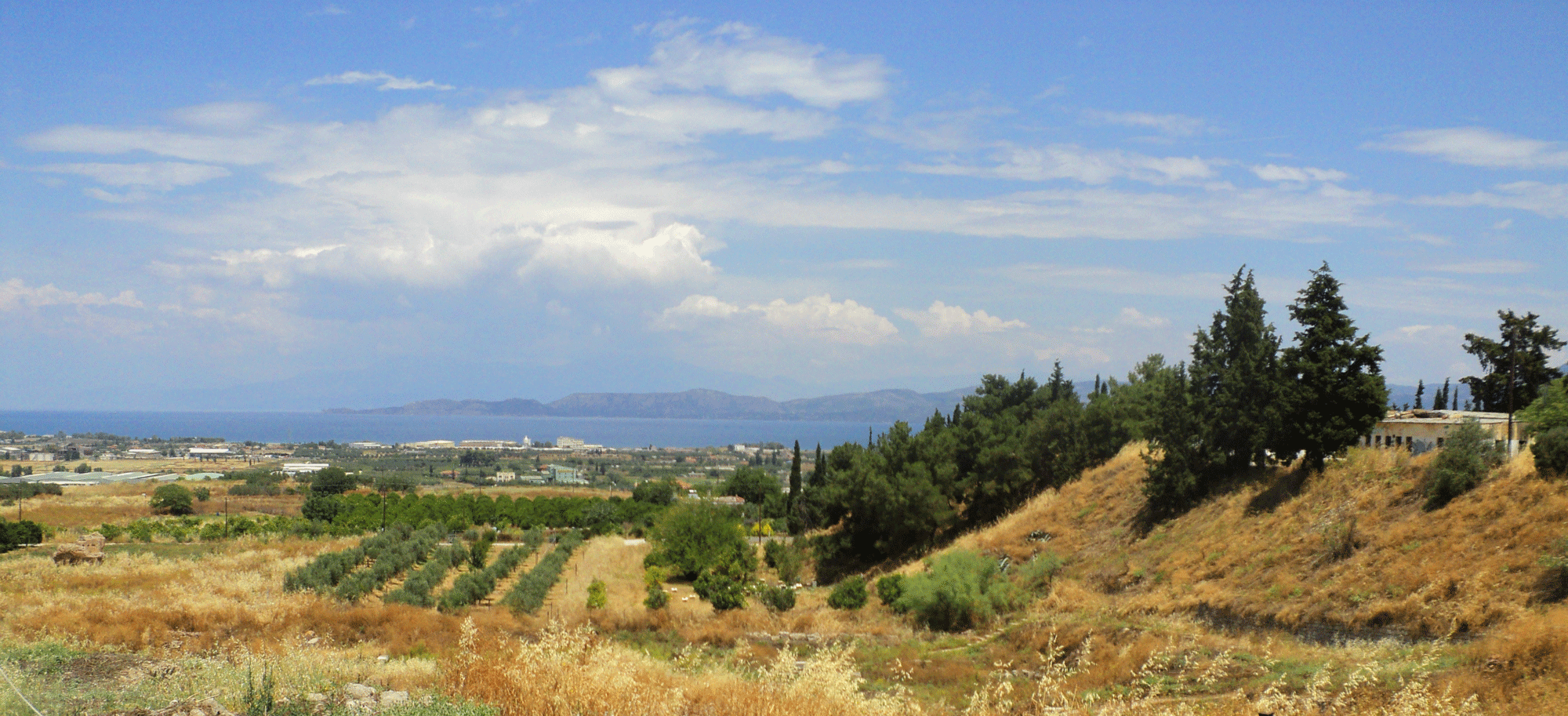

Korinthos
In the book Sophronikos, Son of Sokrates several of the main characters are swept up into a sudden bloody battle between a Spartan regiment at Lechaion (Lechaeum) and Athenian-led peltasts commanded by the general Iphicrates stationed in Korinthos. Not a well-known battle among the public, the Battle of Lechaion in 390 BCE did however have a forceful impact on the Lacedaemonians (Spartans) garrisoned at the port of Lechaion. The Lacedaemonians were on the move, returning to Lechaion without the support of their cavalry and peltasts, and Iphicrates' troops of lightly-armed, swift moving skirmishers and their deadly javelins pounced. The Lacedaemonians lost, in a big way. In fact the regiment of hardcore hoplites was nearly destroyed, a stunning victory for Iphicrates and his troops. Xenophon of Erchia, an exiled pro-Spartan Athenian, begins the account in his work Hellenica at 4.5.11-12. For more on Xenophon, click on the photo to the right.

Xenophon

TheGrappler via Wikimedia Commons
The Athenians were enscounced behind the walls of Korinthos, having just returned from Perachora northwest of Loutraki, where they had been stationed. They had gone to Korinthos to aid the pro-democratic Korinthians who had run off the pro-Spartan oligarchs. Why all this fuss over Korinthos? The city-state was rich, famous for its warships, pottery, and commercial endeavors, and it was positioned in a strategically important place, on the Isthmus., and controlled traffic that flowed between the mainland and the Peloponnese. Another of its valuable assets: the Diolkos, a roadway that cut across the Isthmus, a shortcut along which warships were hauled from the Corinth Gulf to the Saronic Gulf. You can see an illustration of ships being hauled here. Another wonderful website for Corinthian history and archeology is here.
Archaia Korinthos (Ancient Corinth)



-
Left: The Lechaion Road, with the Acrocorinth in the background. The road led from Ancient Corinth to the port at Lechaion, a distance of 3000m.
-
Middle: The Temple of Apollo.
-
Right: Acrocorinth.
-
Below: A map of the ancient city. At the upper right one can see how long walls ran from the city to Lechaion, its port which at 390BCE was controlled by Lacedaemonian forces.




The city's famed Peirene Fountain, named after a woman whose son was accidently killed by the goddess Artemis. It was a favorite watering spot of Pegasus, the flying stallion.
Illustration by Mary Hamilton Frye via Wikimedia Commons

Just prior to the Battle of Lechaion, Lacedaemonian forces were located in two areas; under the command of the Spartan King Agesilaos, encamped in the mountainous area of Heraion and Peiraion; and garrisoning Lechaion. Below, King Agesilaos' view of the Acrocorinth (in the distance) from across the Lechaion Peninsula at Loutraki.

Below, the view the Athenians and Korinthians would have had of the Geraneia Mountains
and Perachora from
Ancient Corinth's Temple of Apollo.


According to historical sources, a Lacedaemonian mora (regiment) of hoplites, cavalry, and peltasts (javelin throwers) had left Lechaion to escort Amyclean troops (Spartans) past the walls of Corinth toward Sikyon along a road that paralleled the sea. Several kilometers outside of Sikyon the regiment of hoplites wheeled about and returned without its cavalry and peltasts, who had continued on toward Sikyon with the Amycleans returning to Sparta for a religious festival. In the photo below, a view not unlike what one would have seen from the battlements of Ancient Corinth. Lechaion would have been off to the right. The returning Lacedaemonians would have been moving from left to right across the field of view on a road that paralleled the shore.

The battle began when Iphicrates and Kallias were informed that the Lacedaemonian hoplites were returning without support of their cavalry and peltasts. Kallias, the commander of the Athenian phalanx, stationed his troops just outside the walls of Corinth. Iphicrates mustered his fleet peltasts and flew off to engage, repeatedly attacking the Lacedaemonians. It must have been a wild, bloody sight to witness.



